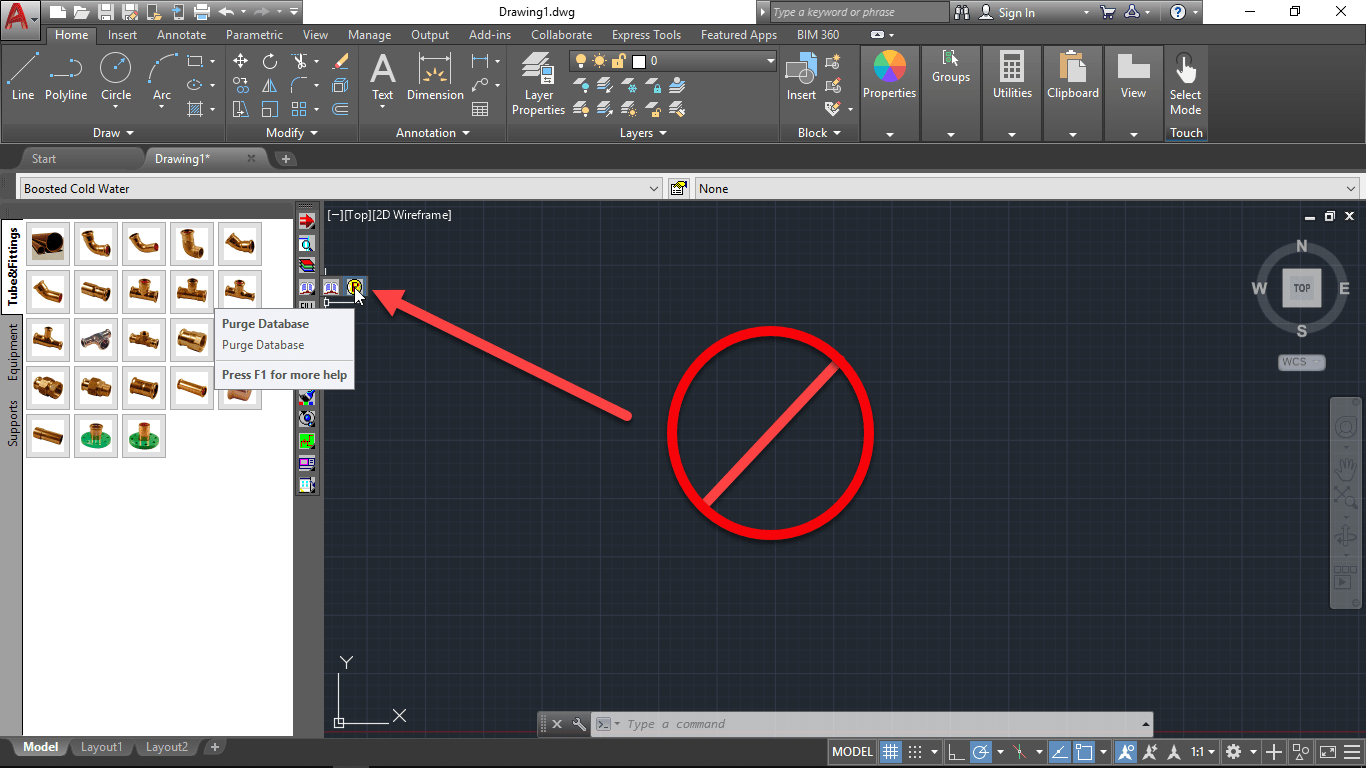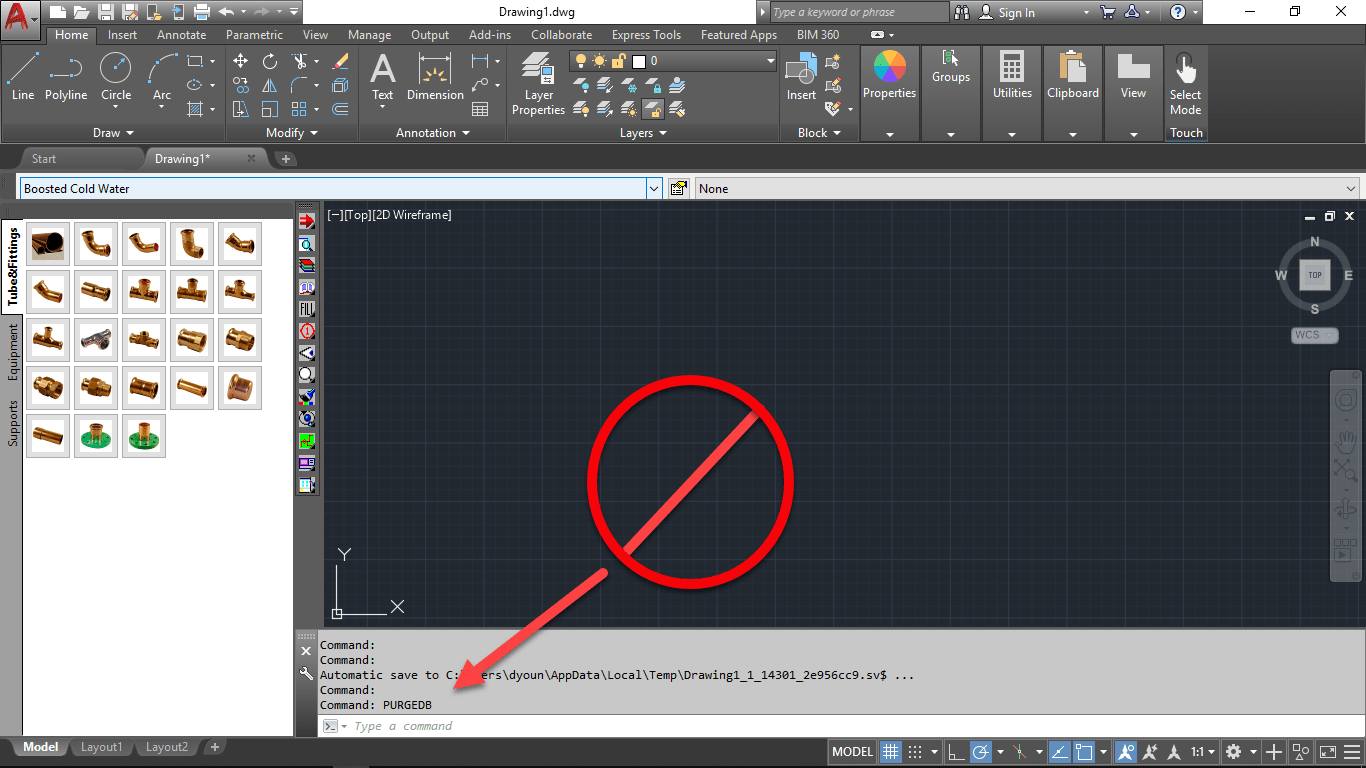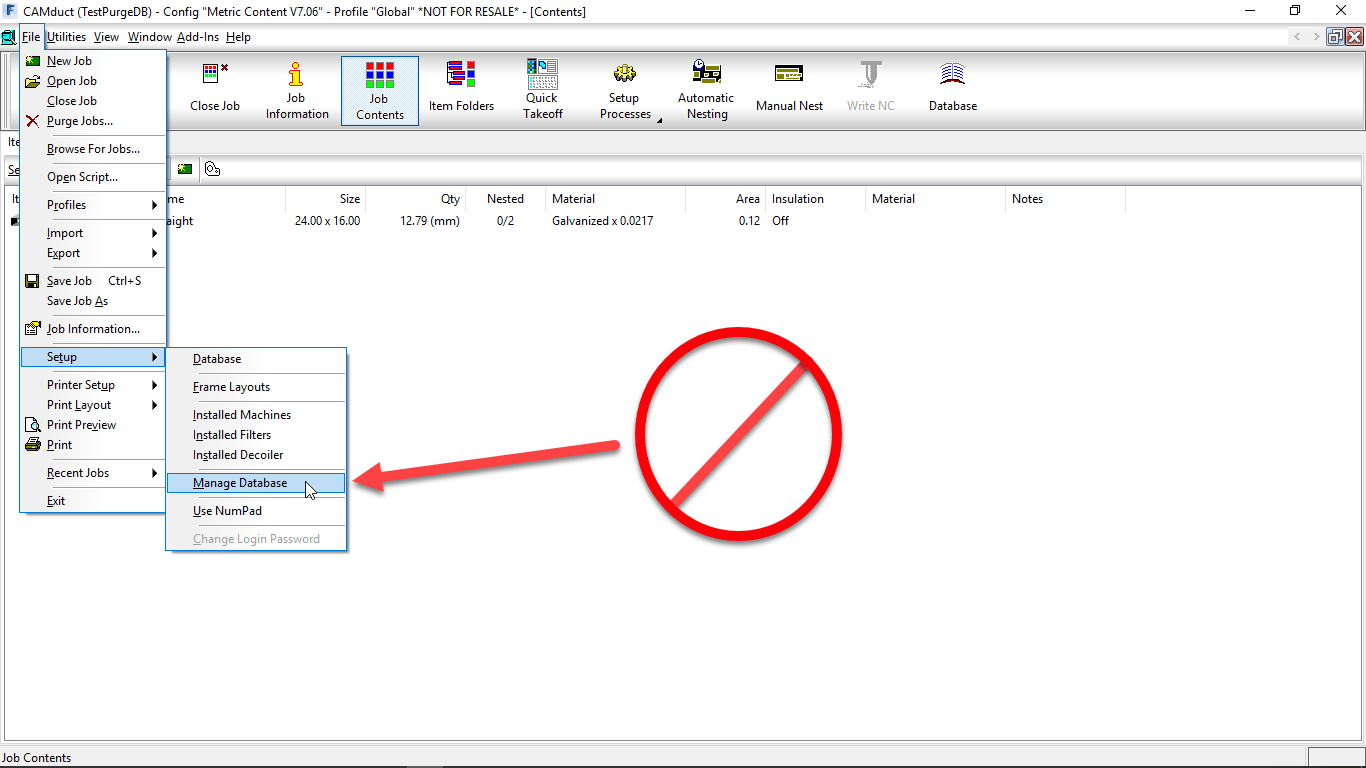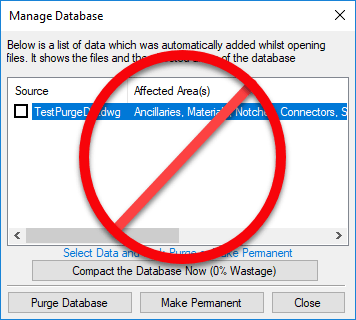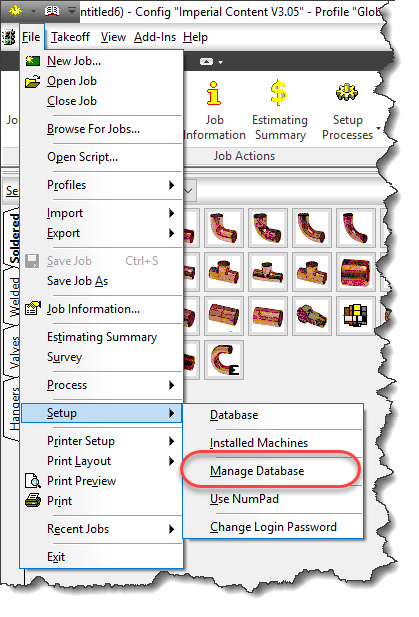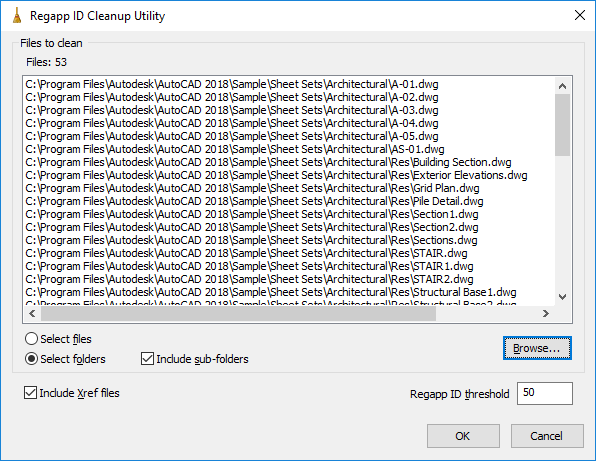AutoCAD 2020 Released – What’s New
The following is an overview of the changes made to the AutoCAD 2020 release.
New Dark Theme
Improvements to the clarity and crispness of the dark theme. Similar sharpening was also applied to the light theme as well.
Background colors were optimized the with the icon colors to provide the optimum contrast without distracting from the workspace, where the focus should be.
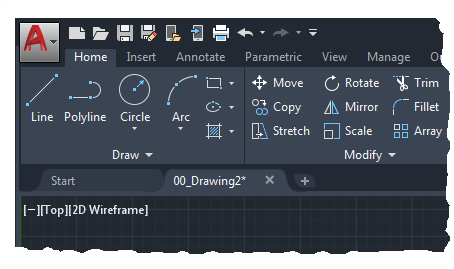
Ribbon Access

Application button > Options > Display tab > Window Elements > Color Scheme
New Commands
None.
New System Variables
None.
Blocks Palette
Redesigning the Insert dialog box was to provide better visual previews of blocks in the workflow for inserting blocks. The palette increases efficiency for finding and inserting multiple blocks-including the new Repeat Placement option, which can save you a step in some cases.
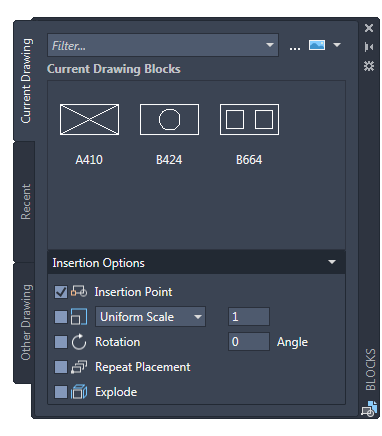
Key features in the new blocks palette facilitate your specifying and inserting blocks efficiently from a most recently used list or from specified drawings. Three tabs are available to provide the following:
- The Current Drawing tab displays all the block definitions in the current drawing either as icons or as a list.
- The Recent Blocks tab displays all the most recently inserted blocks either as icons or a list regardless of the current drawing. These persist between drawings and sessions. You can remove a block from this tab by right clicking it and choosing Remove from Recent List.
- The Other Drawing tab provides a way of navigating to folders from which you can choose drawings either to insert as blocks or to choose from the blocks defined in those drawings. These drawings and blocks also persist between drawings and sessions.
The top of the palette includes several controls, including a field for applying wildcard filters to the block names, and several options for different thumbnail sizes and list styles.
Ribbon Access
Home tab > Block panel > Insert.
Access from the ribbon provides a gallery of the blocks available in the current drawing together with two new options, Recent Blocks and Blocks from other Drawings.

These two options open the Blocks palette either to the Recent tab or the Other Drawing tab. The gallery displays the same content as the Current Drawing tab.
Placing blocks from the palette can be accomplished by dragging and dropping or clicking and placing.
New and Changed Commands
BLOCKSPALETTE – Opens the Blocks palette.
BLOCKSPALETTECLOSE – Closes the Blocks Palette.
CLASSICINSERT – Opens the classic Insert dialog box.
INSERT – Starts the BLOCKSPALETTE command except in scripts, which open the legacy INSERT command for script compatibility.
-INSERT – Starts the command line version of the classic INSERT command.
New System Variables
BLOCKMRULIST – Controls the number of blocks displayed in the Recent tab of the Blocks palette.
BLOCKNAVIGATE – Controls the file and blocks that are displayed in the Other Drawing tab of the Blocks palette. Valid values include: Path/filename and extension to an existing file, and “.” (None), in which case the last-used file is remembered the next time the palette is opened and persisted across sessions.
BLOCKREDEFINEMODE – Controls whether the “Block- Redefine Block” task dialog box is displayed when inserting a block from the Blocks palette with the same name as a block inside the current drawing. 0= Don’t prompt to redefine-always use the local block definition. 1= Display the “Block – Redefine Block” warning dialog box when appropriate (Default).
BLOCKSTATE (Read only) – Reports whether the Blocks palette is open or closed.
Purge Redesign
The Purge feature has been revised for easier drawing cleanup and organization. The control options are nearly the same, but the orientation is more efficient and a resizable preview area is now available.
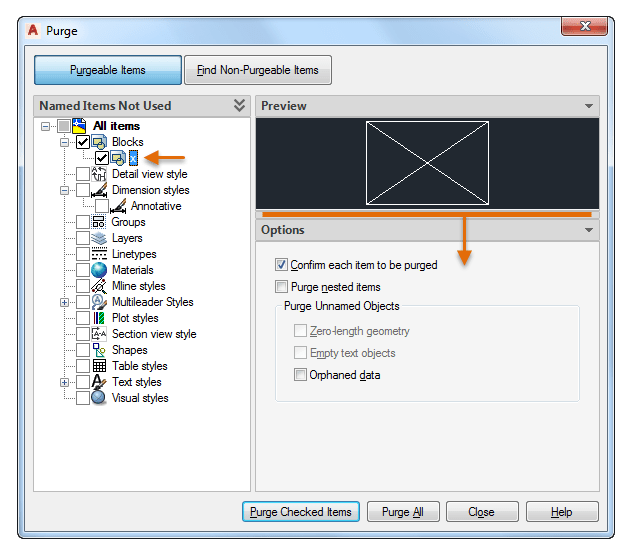
- You can now purge zero-length geometry without purging empty text objects.
- Check boxes in the Named Items Not Used panel provide a way to select purgeable items by category as well as individual items.
- With one click, the Find Non-Purgeable Items button displays additional information specific to why the checked item cannot be purged, which will be helpful in many cases.
- For objects that can’t be purged, the new design provides enhanced information as shown below, including the number of objects on which layers, and their impact on file size. The Select Objects button in the illustration below, zooms in on the specified objects that can’t be purged.
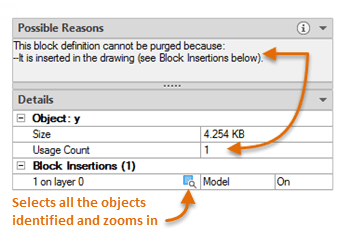
Ribbon Access
Manage tab > Cleanup panel > Find Non-Purgeable Items and Purge.
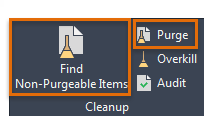
These options control whether Purgeable Items or Find Non-Purgeable Items is currently displayed in the Purge dialog box.
New Commands
None.
New System Variables
None.
DWG Compare Enhancements
The primary enhancement to the DWG Compare feature is that you can now directly compare and edit the current drawing together with a specified drawing while in the compare state. The changes you make in the current drawing are closely tied to the compared drawing and changes between the drawings are dynamically compared and highlighted.
To facilitate direct editing in the compare state, the COMPARE command was moved from the ribbon to a docked toolbar at the top of the drawing area. Most of the options were combined into the Settings control and enhanced as shown. You can easily toggle the comparison from the toolbar and the display of the types of differences from the Settings control.
Also, the default colors can easily be changed by clicking on a color, red to yellow in this illustration, for your preferences or for colorblind-friendly colors.
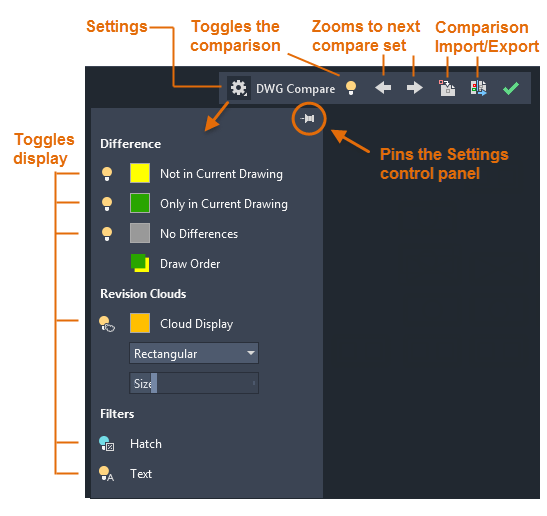
For example, let’s say you need to compare the differences between two highly complex drawings that have been simplified to look like the following:
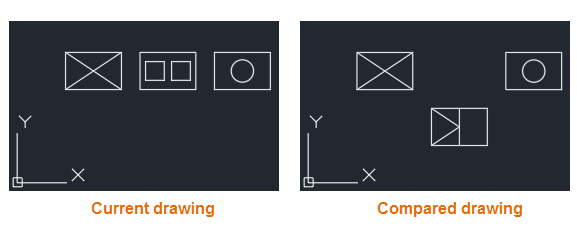
The result of comparing the current drawing with the compared drawing looks like this:
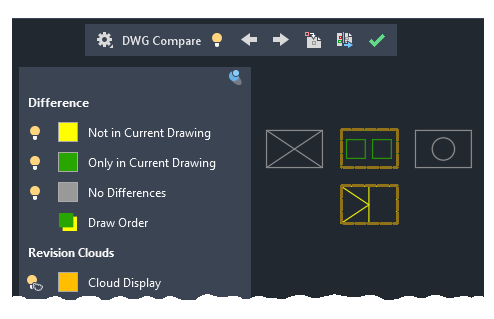
The change sets are each surrounded by orange revision clouds, which are more clearly visible when you’re zoomed in.
- You can import the highlighted differences (yellow) from the compared drawing into the current drawing. If you do so, these objects will now exist in both drawings and will automatically turn gray. Only the objects in the specified area that are not in the current drawing can be imported.
- You can also export both drawings into a new “snapshot drawing” that combines the similarities and changes between both drawings. The result of this operation is the same as a drawing comparison in AutoCAD 2019.
- The arrow buttons provide a way to step through each change set, automatically zooming in to each successive or previous change set.
Ribbon Access
Collaborate tab > Compare panel > DWG Compare.
New Commands
COMPARECLOSE – Closes the Compare toolbar and exits the comparison.
COMPAREEXPORT – Exports the comparison results into a new drawing, called a snapshot drawing, and opens the drawing.
COMPAREIMPORT – Imports objects from the compared file into the current drawing. Only the selected objects that exist in the compared file and not in the current file are imported.
New System Variables
None.
Measure Geometry Option-Quick Measure
Measuring has become much faster with the new Quick option of the MEASUREGEOM command. With this option, you can quickly review the dimensions, distances, and angles within a 2D drawing.
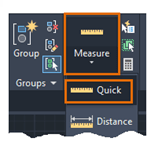
When this option is active, the cursor displays all nearby measurements, both inside and outside the nearest parts of a drawing. The squares displayed at the left side of the illustration represent 90 degree angles.
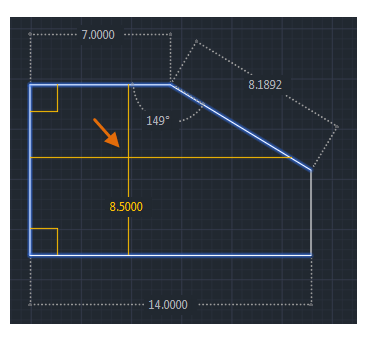
The distance between the two objects is measured in the illustration below because they’re parallel.
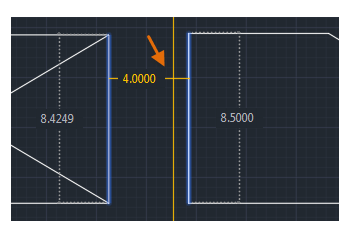
Tip: To avoid quick dimension clutter and to improve performance, it’s best to zoom into complicated areas.
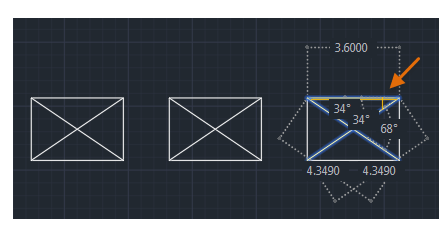
Ribbon Access
Home tab > Utilities panel > Measure/Quick.
Changed Commands
MEASUREGEOM – Adds the Quick option for real-time measurements.
New System Variables
None.
Save to Web & Mobile Enhancements
AutoCAD 2020 includes additional support for AutoCAD Web and AutoCAD Mobile. The enhancements are as follows:
- Support cloud connectivity and storage. Depending on what you have installed, the Places list in AutoCAD file selection dialog boxes can include Box, Dropbox, and several similar services.
- Xrefs are now included with the drawing files that you save for web and mobile access.
- The CAD Manager Control Utility includes a new checkbox on the Online Content tab to disable the SAVETOWEBMOBILE and OPENWEBMOBILE commands. This control has been added for sites that require their drawings to remain within their organization’s network.
Access
Quick Access toolbar save and open commands:

New Commands
None.
New System Variables
None.
Graphics Configuration
AutoCAD now launches correctly with different DirectX drivers (Dx9, Dx11, or no driver), high resolution (4K) monitors, and dual monitors. In addition, the graphics display settings are consolidated into three modes, which includes gradient hatches and images. The graphics performance setting, Intermediate Mode, is updated to reset several display parameters automatically to optimize your display.
Access
Enter GRAPHICSCONFIG at the Command prompt.

The Graphics Performance dialog box displays, shown in part below.

New Commands
None.
New System Variables
None.
